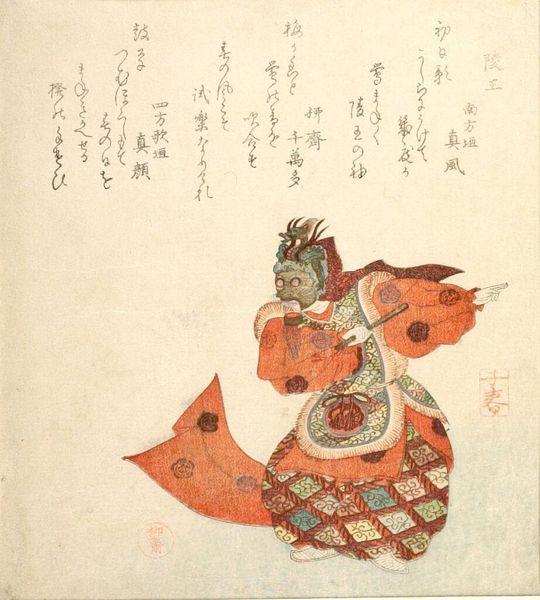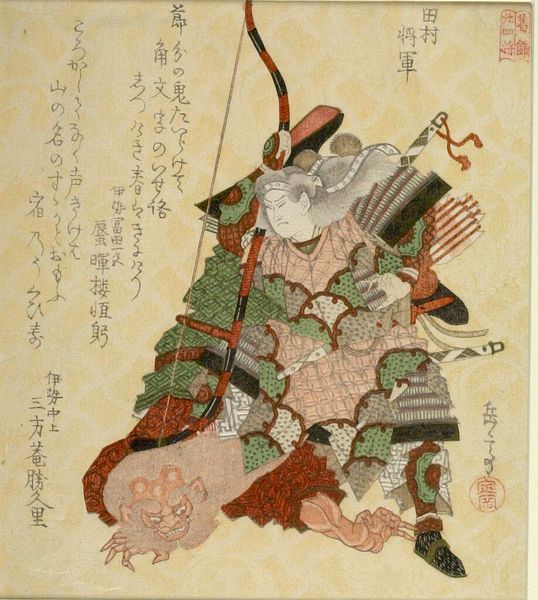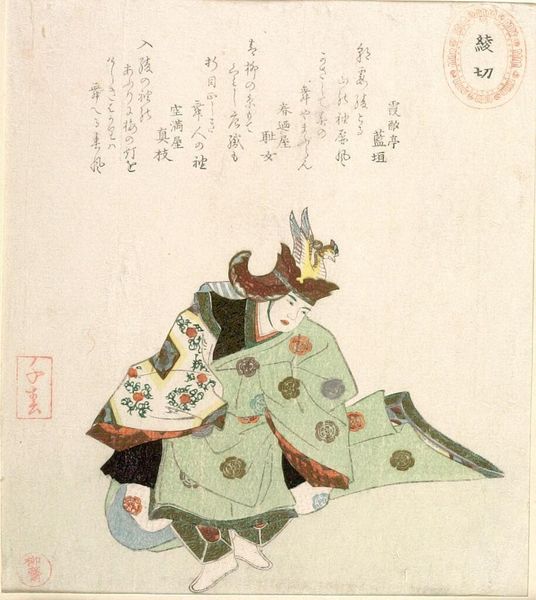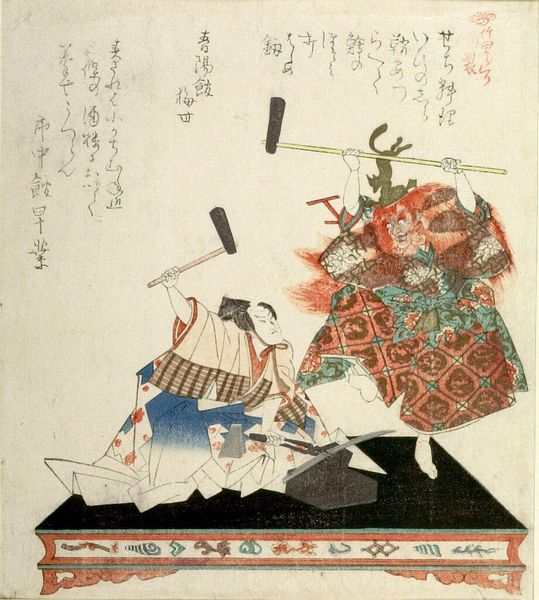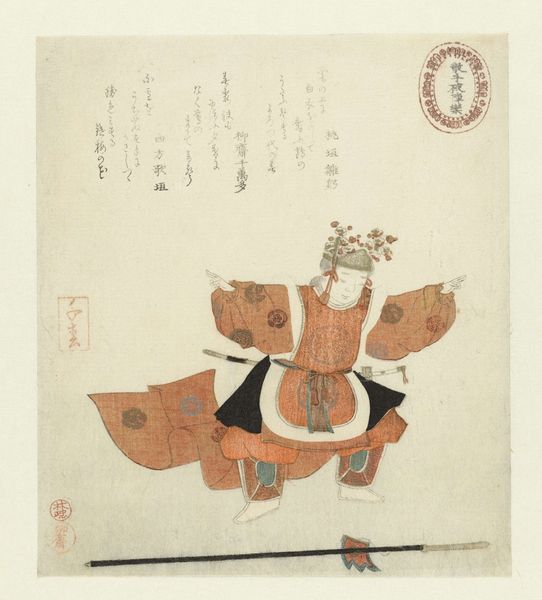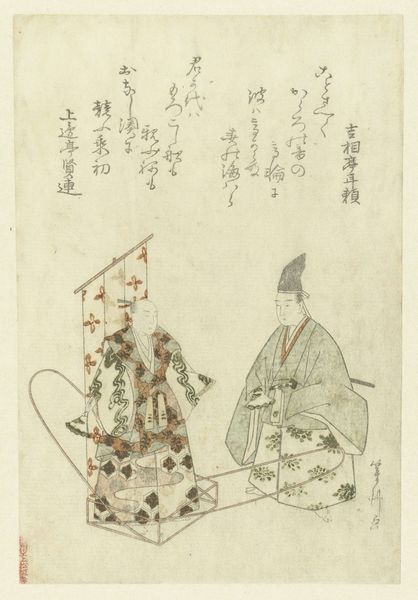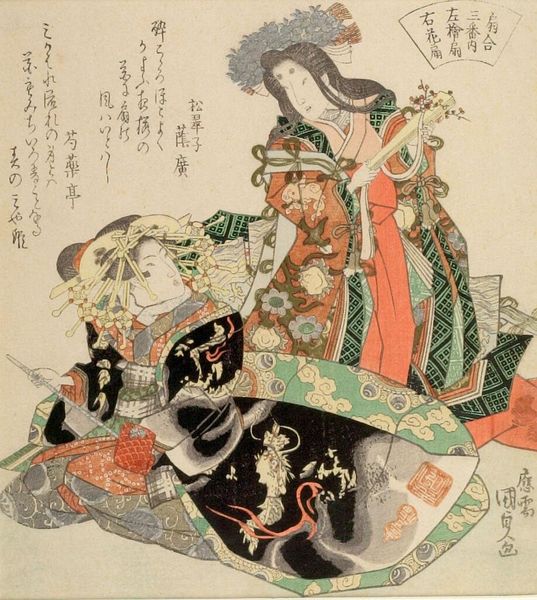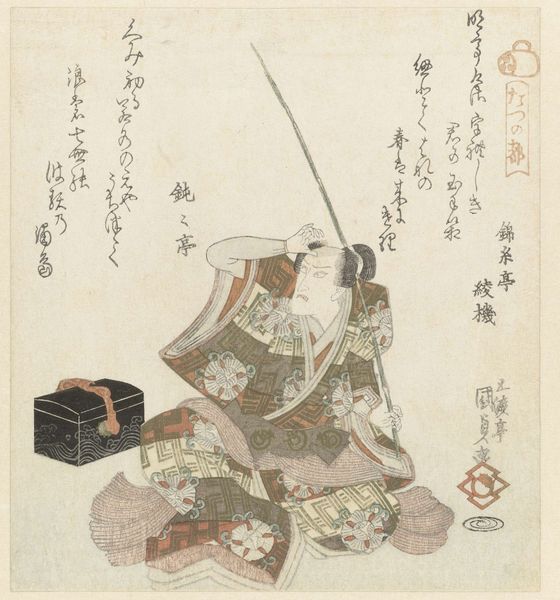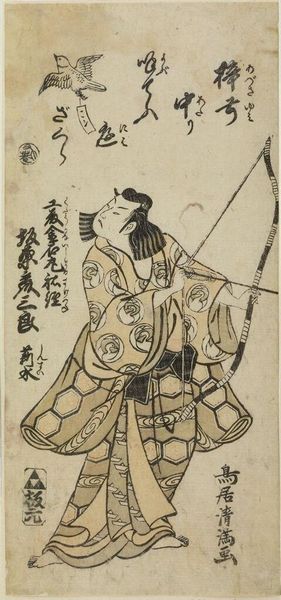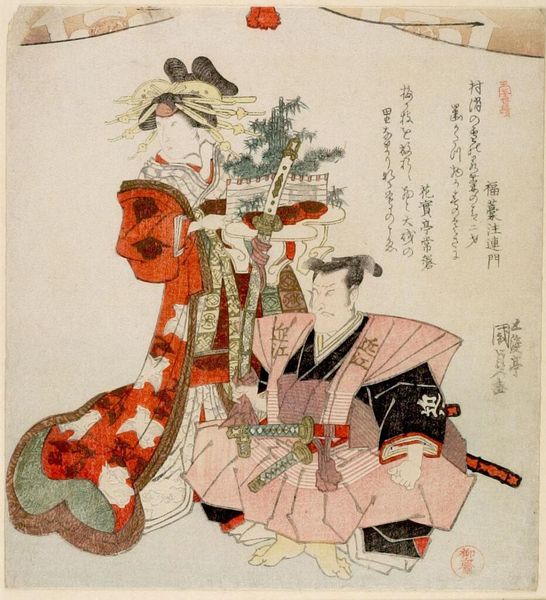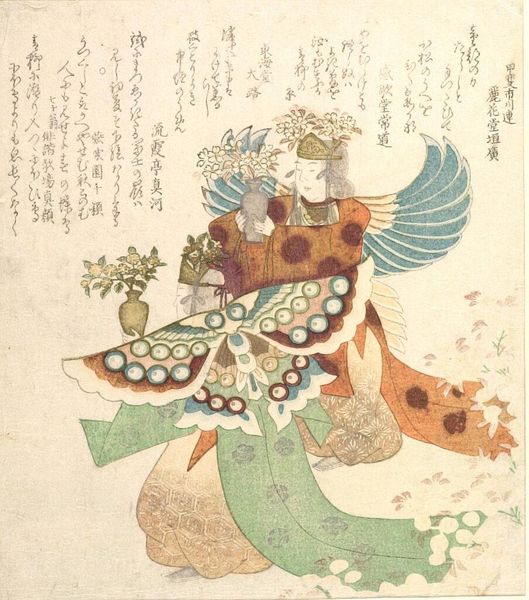
The Bugaku Dance Sanju Hajinraku c. 18 - 19
Dimensions: Shikishiban
Copyright: CC0 1.0
Curator: This is a woodblock print by Takashima Chiharu, who lived from 1777 to 1859. The Harvard Art Museums hold this shikishiban format work titled "The Bugaku Dance Sanju Hajinraku." Editor: The dancer's pose is arresting. The colours feel restrained, and the lines are so delicate. It makes me think of ritual and controlled movement. Curator: Bugaku was indeed a highly stylized dance form performed at the Japanese imperial court. The colours and the motifs on the clothing signify certain roles and traditions. Editor: Notice the repeated circular patterns. They resonate so deeply across cultures, suggesting cycles, wholeness, and perhaps even divinity in this ceremonial context. Curator: The artist, Chiharu, lived during a period of relative peace in Japan. The flourishing of the arts and cultural traditions like Bugaku reflect that societal stability. Editor: The spear lying on the ground seems to represent not just a dance prop, but also a grounding, reminding the viewer of the martial origins underlying even the most refined art. Curator: The image serves as a visual record of the elaborate costuming and performance traditions of the time. It offers a glimpse into the aristocratic culture of Edo-period Japan. Editor: It is amazing how much symbolic information is carried in a single image like this.
Comments
No comments
Be the first to comment and join the conversation on the ultimate creative platform.
